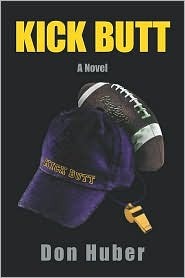Hours—or, rather, weeks—spent with the 2006-07 NCAA football bowls may suggest something wrong not only with the priorities of higher education but with the imperial rituals of the nation. There are a lot of cheerleaders and fight songs and marching bands and rowdy fans and excruciatingly bad renditions of “The Star-Spangled Banner” and excellent tailgate parties implied in the Poinsettia Bowl (December 19); the Las Vegas Bowl (December 21); the New Orleans Bowl (December 22); the Papajohns.com Bowl, the New Mexico Bowl, the Armed Forces Bowl (all December 23); the Hawai’i Bowl (December 24); the Motor City Bowl (December 26); the Emerald Bowl (December 27); the Independence Bowl, the Holiday Bowl, the Texas Bowl (all December 28); the Music City Bowl, the Sun Bowl, the Liberty Bowl, the Insight Bowl, the Champs Bowl (all December 29); the Meineke Bowl, the Alamo Bowl, the Chick-fil-A Bowl (all December 30); the MPC Computers Bowl (December 31); the Outback Bowl, the Cotton Bowl, the Gator Bowl, the Capital One Bowl, the Rose Bowl, the Tostitos Fiesta Bowl (all January 1, and now we’re talking); the Orange Bowl (January 2); the Sugar Bowl (January 3); the International Bowl (January 6); the GMAC Bowl (January 7); the BCS National Championship Bowl (January 8); and I must have left something out, such as the Bacardi Bowl, last played in Havana in 1937.
Though we have difficulty with the cognitive dissonance, there is a problem with the phrase college football, which has changed its meaning before our eyes. The relationship between education and athletics was already a problem in the later days of the ancient world, though a perspective was restored in the Renaissance and maintained in the spirit of noble amateurism within living memory. Decades have gone by since the corruption of the media and big bucks have done to “college football” what they have done to the rest of the country. The whole thing deserves the attention and treatment that Don Huber has given it, and, if he has done so with something of the spirit of Dan Jenkins and Tom Wolfe, he has also attacked the subject with a sense of the precedence of Juvenal and Petronius.
Don Huber’s vision of the steroid-boosted world of McMansions, corporate tie-ins, and adjusted curricula is anchored in the SEC and in a private institution transparently named “Morgan University.” The central character is the athletics director thereof, who has a host of problems. His family life is on the fritz; he has a weight problem because of all those lunches and dinners and cocktails; the president of the university is after him about the budget and the win/loss record; the press is hounding him; the “students” are out of control; and that’s only the beginning. Though the novel is firmly set in the South, we must insist that all the issues are national ones, for what is the South in a world in which top-tier vodka comes from France?
For my own part, I enjoyed the names in Huber’s extensive cast of characters, and these names are Southern, or at least part of the tradition of Southern humor: Inez Calhoun, Dr. Faulkner T. Fentress, Tyson Culpepper, Coach Bobby Cheatem, Tutomo Tongo, Grady Peckers, Bert Alpert and Hank Rowdy (telecasters), Jim Mack Brewer, Jacky Joe Wallace, Jimmy Joe Wallace, and Harlan Gooch spring immediately to mind. But we can’t forget, even with all the laughter, that there is a serious aspect even to absurdity, as signified, for instance, by Dr. Barbara Sazlow, head of the Student Athlete Tutoring program. The clash of values between “education” and “athletics” casts a shadow on all the hijinks, as when we overhear the athletics director intone,
I’ve been trying to convince people ever since I arrived here that a student’s reading and writing skills aren’t necessarily a true indication of their intelligence or ability. . . . I mean, let’s face it, the main thing that standardized tests measure is someone’s socio-economic background. . . . But with the latest court rulings . . . we’ll be able to graduate students we never would have admitted a few years ago.
That sounds like progress, doesn’t it?
The tension between satirical display and narrative drive leads to some unanticipated results, or at least results unanticipated by me. The protagonist is more sympathetic than he seems to be at first; the football season, more suspenseful and dramatic than a schematic treatment would suggest. In other words, Kick Butt is a funny, lively, and even surprising novel that works as entertainment, succeeds as a sociological exposition, and teases as a critique of corruption and confusion.
After the paradoxical dynamics of the book are satisfied, we are left with some reflections and perspectives. Roger Callois indicated in his notable treatment of the subject that there are six essential characteristics of games: They must be free, separate, uncertain, unproductive, regulated, and fictive (Les Jeux and les Hommes, 1958). The problem with college football today, as with other forms of the bloated sports business, is that it is altogether too over-organized; not nearly separate enough; sufficiently certain for the bookies in Las Vegas; too, too productive; not sufficiently regulated; and, above all, all too real. As for Don Huber’s Kick Butt, there are no problems at all.
[Kick Butt, by Don Huber (Sewanee, TN: Sewanee Mountain) 366 pp., $19.95]

Leave a Reply